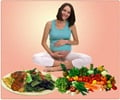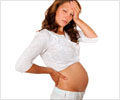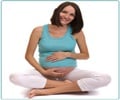The presence of intra-amniotic debris present in nulliparous women with a short cervix increases the risk of early (less than 35 weeks) preterm birth.

The multicenter study, presented by Dr. George Saade for the Eunice Kennedy Shriver National Institute of Child Health and Human Development in Bethesda, Md., looked at intra-amniotic debris in 657 nulliparous women (women who have never given viable birth) with slightly short cervix, examined as part of a treatment trial. The study did not look at women with normal cervical length.
The medical community has long been aware of the risk of preterm birth associated with shortened cervix, but not much is known about debris in amniotic fluid during pregnancy, including what the debris is and how it influences preterm birth.
"Some think it could be proteins, or cells floating around, or infections, or inflammation," said Dr. Saade. "We aren't sure, but from the research: when it is present, the risk for preterm birth is higher."
The women, as part of the treatment for the shortened cervix, had transvaginal ultrasounds, by sonographers certified in cervical length measurements, as well as identification of intra-amniotic debris and cervical funneling.
Dr. Saade says more information about the debris is still needed.
 MEDINDIA
MEDINDIA



 Email
Email










